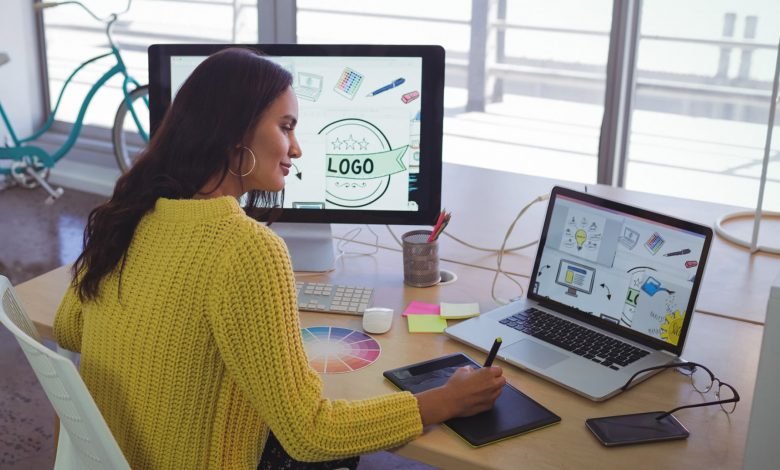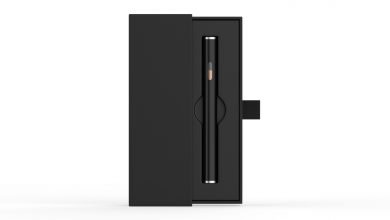
Do You Have to be Good at Drawing to be a Graphic Designer?
We often get asked ‘Do Graphic Designers need amazing Drawing skills? In short, the answer is NO. You can still become a successful Graphic Designer and not be good at drawing.
So, you want to be a graphic designer. You have an eye for detail, you love working with both technology and people and you’re excited by the thought of communicating visual messages to a large audience.
The only problem? You’re not exactly an expert drawer. The good news is you’re not alone! And you certainly don’t have to lay aside your career goals just because you’re not the next da Vinci.
In fact, drawing skills generally aren’t even a requirement in most graphic design job descriptions. In an analysis of more than 46,000 graphic design job postings, eight of the top 10 skills in highest demand are associated with design software.* You’ll be even more relieved to know that drawing isn’t even listed in the top 25.
So you can take a deep breath, because the graphic design professionals we spoke with agree that a lack of drawing skill definitely isn’t a deal-breaker. There are plenty of other skills you can wield to thrive in the industry. Keep reading to learn their advice for overcoming your concern.
What is graphic design?
A Graphic designer’s job is to create engaging compositions to either sell a product, service or promote a message.
Graphic Designers do not need to draw but instead need to create appealing designs using assets such as images, typography, illustrations.
Core Skills for a Graphic Designers
1.Basic sketching skills
As a Graphic Designer, you must be able to think creatively, and one of the best ways to improve your creativity is through sketching. Sketches are rough drawing used by designers for planning and productivity. The drawings do not need to be perfect but instead think of a visual way to get ideas down on paper.
Here are some examples to explain this further!
Example 1 – Thumbnail sketch for Magazine Designers
As the above example shows, you can create rough thumbnail style sketches to indicate the placement of images, type or other elements. You can then share your sketches with your team/boss to get their feedback before moving to the actual design.
This method will help you to have the right direction and, improve productivity and even avoid any creative block.
Example 2 – Logo Sketch Ideas
When it comes to creating logos, most designers will start with 10-20 (or even 30) very rough sketches. The client may only like 3, so instead of designing so many variations in Adobe Illustrator, you can focus on developing the three chosen ideas before producing the final one.
The sketching process will add clarity, save time and improves productivity in every project.
Bonus: Drawing skills Apps
Although many graphic designers don’t draw, with so many drawing apps now readily available, many have started to explore creating digital illustrations.
-
Learn the Basic Design Theory!
To become a successful graphic designer, you need to learn the principles of design and have a good understanding of design theory. The more you design, the better you will come to understand them.
7 Key Design Principle
- Scale: Draws attention to design elements, creates emphasis.
- Hierarchy: Helps users to navigate your design, signals the importance of different elements.
- Contrast: Light vs Dark, Thick vs Thin, helps make design elements’ pop.’
- Direction: Create a path and direct viewer in ‘Z’ ‘L’ and ‘Y’ shapes.
- Negative Space: Leave blank space between elements to give it some breathing space.
- Repetition: Helps to tie elements together within a composition and adds consistency
- Balance: Proportions within a design that distributes elements equally. Symmetry is a perfect balance, while asymmetry creates tension.
3.Master the Designers Application
Finally, it would help if you Mastered Design applications. Top 3 software to Master as a designer are:
- Adobe Photoshop – Ideal for Photo Editing
- Adobe Illustrator – Ideal for Vector illustration
- Adobe InDesign – Ideal for layout and page design
Learning these applications will help you to work on projects such as Logo and Branding, Editorial (magazine, books) Advertising, Web Design, and so much more!
Learning to Draw will undoubtedly be an advantage to your career, the more skills you have as a designer; the more opportunities will open up. Although you do not need to be great at drawing, it is advisable to have at least simple sketching skills, which will improve your creativity and productivity.
-
Practice simple sketching
Graphic design may not require professional drawing skills or a fine art background, but UX designer Isaac Hammelburger says simple sketching can get the job done.
“I can’t draw and it used to be a real hindrance until I discovered the art of simple sketching,” Hammelburger says. “With simple sketching, the point is to think about the message you’re trying to drive and then draw simple figures to showcase it.”
Bill Sattelmeyer, Rasmussen College School of Design dean, supports this claim. “Do designers have to be great artists? Absolutely not,” he says. “Essentially, all a designer needs to know is how to sketch out basic design content.”
Put your worries aside
You can no longer use your artistic abilities (or lack there of) as an excuse for not pursuing a profession in graphic design. Sattelmeyer encourages aspiring designers to pursue their dreams regardless of their drawing talent.
“There’s no need to worry over having to become an accomplished illustrator,” he says. “As long as you can get the point of your designs across to your clients, you can find success despite what you think of your drawing talent.”




reputable mexican pharmacies online
http://cmqpharma.com/# purple pharmacy mexico price list
mexico drug stores pharmacies
medicine in mexico pharmacies: online mexican pharmacy – reputable mexican pharmacies online
reputable indian online pharmacy india pharmacy best online pharmacy india
recommended canadian pharmacies: legit canadian online pharmacy – best canadian online pharmacy reviews
canadian online drugstore: canadian pharmacy ratings – canadian online pharmacy
mexican pharmacy buying prescription drugs in mexico online buying prescription drugs in mexico
mexico pharmacy: pharmacies in mexico that ship to usa – mexican pharmacy
mexico pharmacies prescription drugs: mexican mail order pharmacies – mexican border pharmacies shipping to usa
http://foruspharma.com/# medicine in mexico pharmacies
indian pharmacies safe world pharmacy india buy medicines online in india
mexico pharmacy: medicine in mexico pharmacies – mexican online pharmacies prescription drugs
Online medicine order: п»їlegitimate online pharmacies india – п»їlegitimate online pharmacies india
http://indiapharmast.com/# mail order pharmacy india
indian pharmacy online: top online pharmacy india – top online pharmacy india
mexico pharmacies prescription drugs: mexico drug stores pharmacies – mexican rx online
best rated canadian pharmacy: my canadian pharmacy – online canadian pharmacy
buying from online mexican pharmacy: mexico drug stores pharmacies – mexican pharmaceuticals online
http://clomiddelivery.pro/# how can i get cheap clomid online
http://ciprodelivery.pro/# cipro online no prescription in the usa
http://doxycyclinedelivery.pro/# buy doxycycline 40 mg
http://paxloviddelivery.pro/# paxlovid pharmacy
http://doxycyclinedelivery.pro/# doxycycline capsule 100mg price
https://amoxildelivery.pro/# rexall pharmacy amoxicillin 500mg
http://clomiddelivery.pro/# where buy cheap clomid now
https://amoxildelivery.pro/# where to buy amoxicillin over the counter